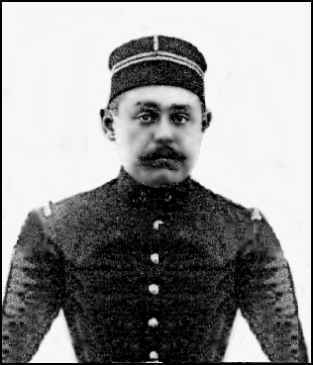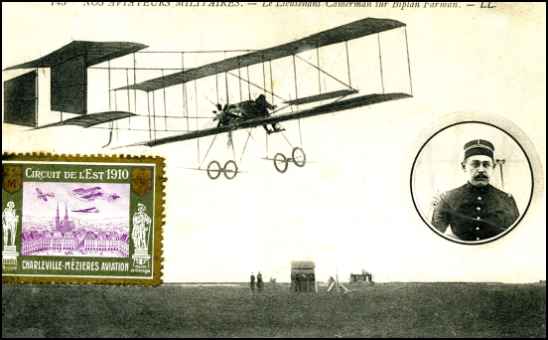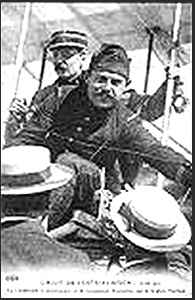
1884-1963 AKA Felix Cammerman |
 |
 |
Collection of Dave Lam, 10-10-05 |
|
via email from Dave Lam, 10-12-05 Dave More on Camerman: He was born 2 Oct 1884, died 29 Dec 1963, both in Paris. He was an engineer officer, and was the first officer granted a pilots license from the Aero Club of France (March 1910). First officer to fly on a military airplane in France. He took part in the Circuit of the East (Circuit de l'Est in 1910, and many other competitions. He commanded the military aviation school in Chalons, France in 1910. Later, served as inspector general of manufacture at the Aeronautic Ministry (1916), Director of French Civil Aviation (1925), then began work in industry. Later, he became the Secretary General of the International Federation of Aviation. Dave |
|
The Daily Journal and Tribune, Knoxville, Tennessee: September 29, 1912, Transcribed by Bob Davis - 6-11-04 To return to the subject of aerial traffic, we hear that, "holding an opinion adverse to the use of these machines for transportation, Mr. Wright maintains, nevertheless, that flying through the air is still no more dangerous than automobile racing was in the early stages, or some other popular sports. If flying is not very dangerous, and is reasonably safe, and two men in an aeroplane have traveled 110 miles and for almost three hours without stopping, there must be a fair prospect that this airship, assuming it to be capable of improvement, may be used for transportation. The case might have been made even stronger. The flight to which reference is made, we assume, is that of Lieut. Camerman, of the French army, who on December 23rd, with a passenger, flew straight across the country for 147 miles, remaining in the air for four hours and three minutes, and winning the Lexare-Weller prize for 1910. Even more significant was the flight last week of Henry Weyman, with three passengers, of approximately fifty miles from Mourmelon to Rheims and return. But even admitting all this, it does follow that aerial transportation can be immediately realized. Take the case of the automobile today. Speaking of passenger transportation as a commercial proposition - and this is undoubtedly what Mr. Wright means - we should hardly say that motor cars were used for this purpose. Even though the travel by this means is frequently more pleasant, and sometimes quicker, the railroads are not complaining of a loss of business from this cause. The case of the flying machine appears similar. It is likely to be many years before the aeroplane is developed to such an extent as to be independent of wind and weather conditions or until it can carry passengers in comfort at all times. Until we reach this stage, transportation by railway is not likely to be seriously threatened with aerial competition. Undoubtedly the aeroplane in the case of difficult or inaccessible places will be useful, as Mr. Wright himself says, for carrying one or more persons, or for transporting light freight, such as mails, etc. In fact, the Wright machine itself has carried light freight, consisting of bales of silk, under the guidance of Aviator Philip O. Parmalee, from Dayton to Columbus. These, however, are special cases and affect the case of transportation in general, not at all. Beyond question the day of flying as a popular pastime is coming soon, but flying as a means of everyday transportation is not yet in sight - Boston Transcript |
 |
Collection of Dave Lam, 10-10-05 |
|
(3-11-06), you will find about 12 links. |
|
If you need the translated version, you can click on: |
|
"Pierre Latécoère was interested and it would have favorably considered the participation of the Commander Cammerman in the mission if this voyage could be delayed 3 months, because Cammerman was to take part in Rome with multiple conferences which were, at that time, l'ordinaire occupations of the various European air transports. No other n'ayant name of qualified personality be, advanced, Latécoère was, after this lunch, much more embarrassed in its choice. Each possibility considered s'avérait not easily realizable, so that it was still with one of my proposals that Latécoère s'arrêta." I suspect that anyone who can read the entire article in French will be well rewarded for the time spent. It appears to be a fascinating story of an important early development of air transportation. You can access the page by clicking on the title above. |


|